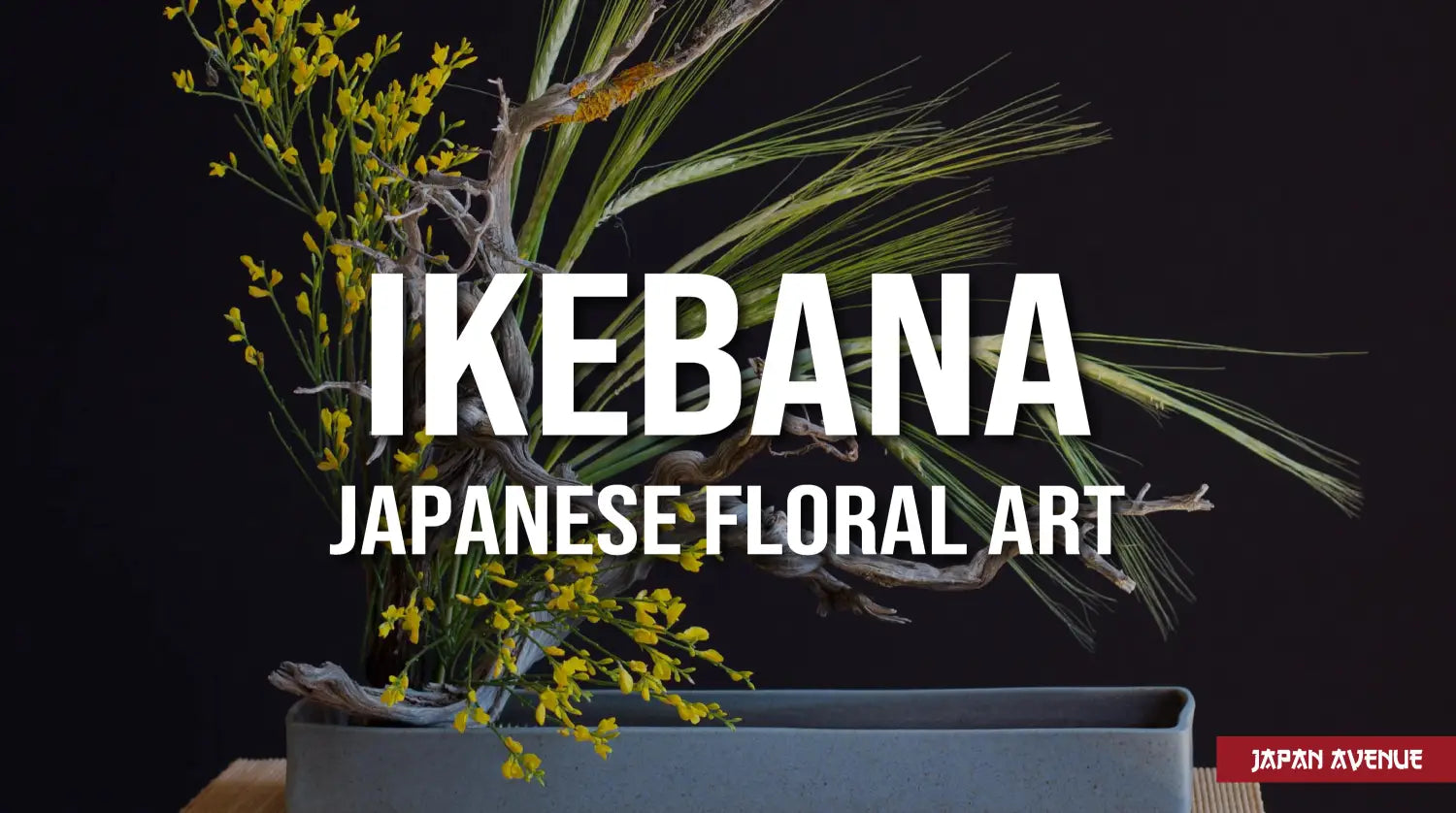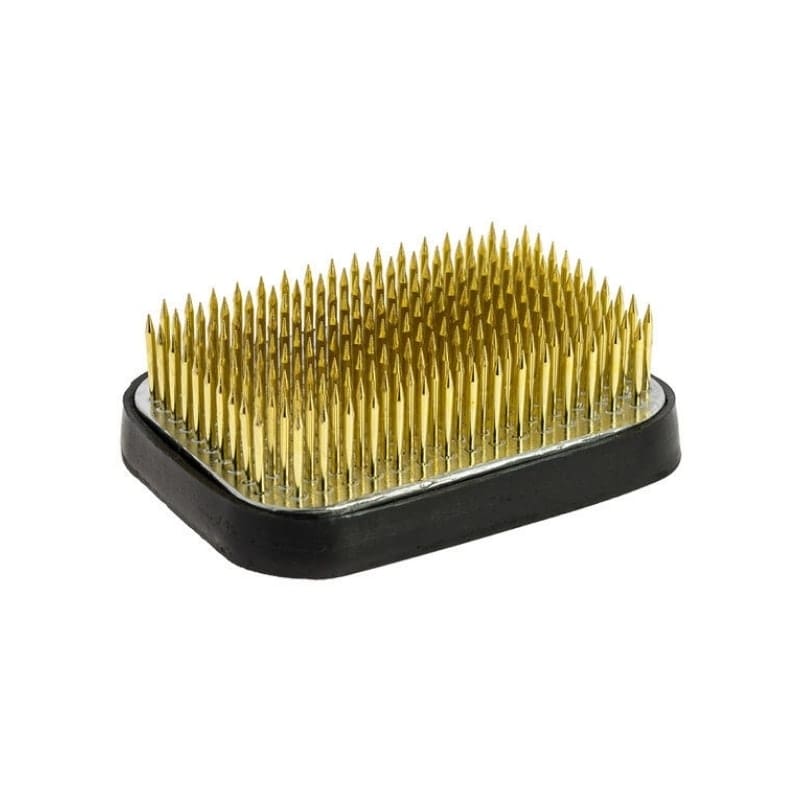Delicacy and elegance are highly valued qualities in traditional Japanese arts. At the top of refinement, Ikebana or Japanese flower arrangement is a widespread artistic practice in the Land of the Rising Sun.
Ikebana (生け花) is a Japanese floral art that allows the creation of a natural decorative structure of pure lines and spiritual connotation. A genuine living work that unites Man with Heaven through nature, the Ikebana is an invaluable treasure.
Discover the origins and the uses of this flourishing discipline in the rest of the world, where harmony is the key word.
🌺 Definition of Ikebana
The flower arrangement, called Ikebana or Kadô in Japanese, is a traditional art that appeared with the arrival of Buddhism in Japan in the 7th century. A mixture of symbolism, philosophy and creative expression, the Ikebana is a tribute to nature. Its name means "art of making flowers alive". Initially reserved for religious use, the practice of flower arrangement developed and became an art by itself just like painting or sculpture in Japan. Over time, several artistic trends contributed to the evolution and development of this creative hobby.

Photo Credit: Otomodachi / Editing: Japan Avenue
Contrarily to the Western way, the Japanese flower arrangement does not focus only on the beauty of the flowers in the bouquet, but rather on the whole structure.
Each element has its importance: the vase, the stems, the branches, the foliage and the flowers. Ikebana favors quality over quantity. The lines and shapes are worked to respect the aesthetic and spiritual codes of Japanese floral art. Earth, Man and Heaven are consistently represented through the plant artworks.
More than a pretty bouquet for home decoration, Ikebana transmits a real emotion to the one who contemplates the creation. Like many Japanese disciplines, Ikebana or "The Way of Flowers" is part of a philosophy inspired by nature. This highly respected art in Japan is increasingly fascinating the West.
🐣 Origins of Japanese floral art
We all know how much the Japanese appreciate nature because of their religions and beliefs. Despite the development of the urbanization, the link with the universe remains strong and the inhabitants of the archipelago like to surround themselves with plants and flowers. It is therefore not surprising that floral decoration has gained the hearts of the people in Japan.

Japanese prints showing Ikebana (artists: Utagawa Toyokuni on the left, Shiro Kasamatsu in the center, Kitagawa Utamaro on the right)
Ikebana is a part of the heritage of Buddhism, imported to Japan around the 5th century. During religious services in India, flowers were placed around the altar as a way of honoring Buddha. This tradition was perpetuated in the Land of the Rising Sun through the Japanese Buddhist monks who decorated the temples.
Around the 8th century, these people started to arrange beautiful bouquets of flowers following very precise religious principles. Later, the aristocracy were inspired by their creations for decorating their interiors. Ikebana became a codified art reserved for the nobility. Only monks, shoguns, samurai and high ranking men had access to this form of creative expression. Only during the 15th century Ikebana extended to all social classes.
🙋 The different Ikebana schools
Among many schools of Ikebana in Japan, the most famous are: Ikenobo, Ohara and Sogetsu.
The Ikenobo School, the oldest one
The first and most ancient school refers to the lineage of monks of the Ikebono family who have been carrying on the tradition of Japanese floral art ever since the 7th century. As a true master of flower arrangement, Senmu was the first monk to teach the art of flower arrangement in Rokkakudo Temple.
Among these heritages there is the Tatebana: a floral art inspired by religious principles evoking abstract notions such as eternity or the relationship between man and its environment.

Flower arrangements following the Ikenobo school (source: www.maivan.flowers)
Little by little, the bouquets came out of the temples and bloomed in the streets during Japanese ceremonies and festivals. In 1445, the oldest work governing the uses of Japanese floral art appeared. This is the Sendenshô, a compilation of 53 arrangements to be created according to the events of life. Each flower arrangement corresponds to a particular ceremony in Japan, such as weddings, New Year's Eve or boys' day.
Shortly after, the master Senkei Ikenobo introduced the rules of floral composition. He became famous by creating the triangular shaped combinations called Rikka: a major reference for the floral decoration of castles in Japan. In addition, the Rikka style remains very popular today.
Among the different 17th century Ikebana styles, we can note the Nageire style, coming from the tea ceremony, or the Wabi style which advocates the return to the essential. During the 18th century, the practice of Ikebana became more democratic. Women had the right to practice the floral art that had previously been reserved for men. As a result, the Shoka style was developed with its triune form and its Ying Yang philosophy.
The Oharan school, a more modern version
The Oharan school appeared in the 19th century with the Moribana movement which proposed a more modern version of Ikebana while including Western-style flowers. Unshin Ohara, its founder, revolutionized the codes of floral art by incorporating the use of flowerpicks in his combinations, as well as flat bowls and colored plants.
The Sogetsu school, a freer style
Finally, the Sogetsu school, founded in 1957 by Sofu Teshigahara, breaks with the traditional conventions of Ikebana by emphasizing the personality of the artist. Creations are adorned with new materials (fabrics, bark, glass...). This freer style is distinguished by its verticality and oblique lines. The floral arrangements look like more of an artistic sculpture.
🍁 How to realize an Ikebana arrangement
Ikebana can be found in homes, public places and religious buildings. Many Japanese people practice Ikebana in order to maintain a bond with nature in their homes. However, this creative hobby is flourishing all over the world.

If you enjoy home decoration and the philosophy behind Ikebana, know that this art is accessible to all. You want to create beautiful centerpieces for a special occasion or just some original compositions? You don't need to be a skilled florist. All you need is a place to work, fresh flowers, natural elements and a few tools such as pruning shears, scissors and a flower holder (a kind of support that holds the branches).
Naturally, you will need to learn the basic principles that characterize Ikebana. Asymmetry, simplicity, harmony, the use of lines and emptiness are the fundamentals of this artistic discipline. Similarly, you must be careful to emphasize the overall structure.
How to start with Ikebana
Pick a nice container like a ceramic vase, a wooden stump or other natural elements. The plants should be selected according to the message you wish to deliver. Learn about their symbolism in Japanese culture and opt for elegant and authentic seasonal flowers.
| 👉 In Japan, there exists a language of flowers, called Hanakotoba. Learn more about the secret language of flowers in Japan. |
You'll find cherry blossoms, lilies, peonies and pretty hazelnut branches in spring; roses, lotus or hibiscus in summer; chrysanthemums, orchids, flaming dogwood or Virginia creeper leaves in autumn and lastly daphne or honeysuckle in winter.
Add elements of varying textures and sizes such as plant moss, grasses and buds.
The sky will be the focal point of your arrangement, represented with a stiff branch for example. In the middle, a pretty flower can symbolize the human being. Further down, arrange plants to represent the Earth. Remember, for a successful composition, sobriety is the key.

Old colorized photos of young Japanese women practicing Ikebana.
☀ The philosophy of Japanese floral art
You now know the principles of Ikebana, which go hand in hand with the Zen philosophy. More than just aesthetics - the search for meaning and symbols is what makes Japanese floral art so fascinating. Ikebana is also driven by the reverence for nature that emanates from the Japanese culture. Ikebana art follows the cycle of the seasons while representing life in its purest form, from the bud to the dead leaf.
🧘♂ The art of meditating with flowers
This form of artistic expression is close to meditation as the artist must focus on what they feel in the present moment in order to call upon their creative force in connection with their own truth... Thus, by practicing this floral art regularly, you will sharpen your sense of observation. A true connection between human beings and nature, Ikebana will raise your awareness of the universe while liberating your creative energy.



















